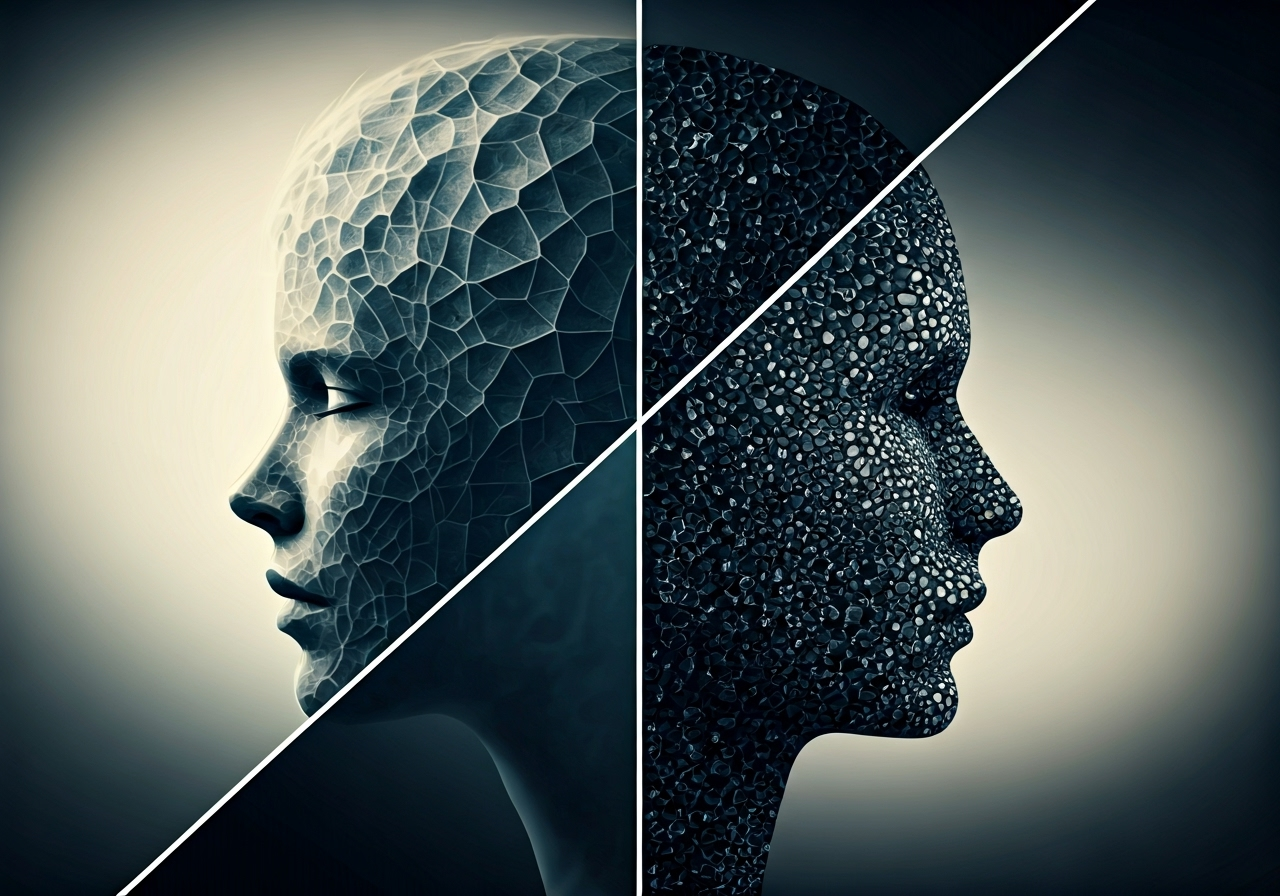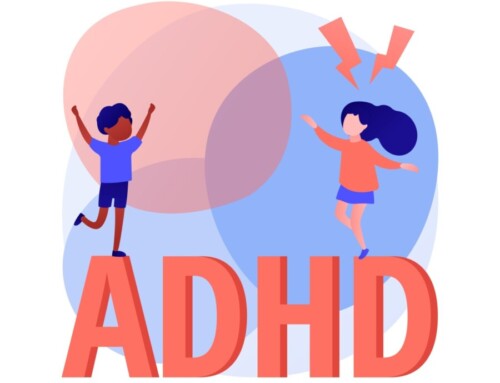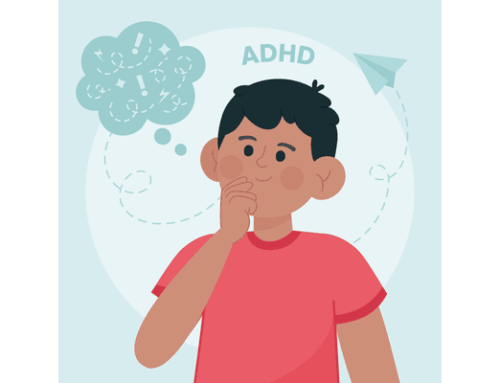Bipolar Disorder and Borderline Personality Disorder
Borderline Personality Disorder (BPD), Bipolar I Disorder, and Bipolar II Disorder are distinct mental health disorders with similar symptoms and overlapping characteristics, but critical differences in presentation, duration, and effective treatment options for the right treatment.
Borderline Personality Disorder is characterized by significant changes in unstable moods and behavior change, and relationships. Individuals with BPD often struggle with intense emotional reactions, intense emotions, impulsivity, and fears of abandonment. Therapy such as dialectical behavior therapy (DBT) is commonly used to help individuals manage their symptoms.
Bipolar I Disorder involves manic episodes that last for at least seven days or are severe enough to require hospitalization. Depressive episodes also occur in Bipolar I Disorder. Treatment of bipolar disorder typically involves mood stabilizers, antipsychotic medications, and therapy to manage symptoms.
Bipolar II Disorder is marked by a pattern of depressive episodes alternating with hypomanic episodes that are less severe than full-blown mania. While individuals with Bipolar II may function relatively well between episodes, they still require treatment to prevent mood swings from interfering with daily life.
It is essential for individuals experiencing symptoms of these disorders to seek professional help for an accurate diagnosis and appropriate treatment plan tailored to their specific needs. Early intervention and ongoing support can significantly improve the quality of life for those living with these conditions.
Individuals with bipolar disorder and borderline personality disorder share overlapping symptoms, leading to a higher risk of misdiagnosis and increased vulnerability to self-harm and suicidal behaviors
Borderline Personality Disorder (BPD)
BPD is a personality disorder marked by emotional instability, unstable relationships, and a fragmented self-image. Key symptoms include:
- Intense fear of abandonment leads to frantic efforts to avoid real or perceived rejection.
- Rapid mood swings (e.g., anger, sadness, emptiness) triggered by interpersonal stressors.
- Impulsive behaviors (e.g., reckless spending, substance misuse).
- Chronic feelings of emptiness and unstable self-identity.
Diagnosis requires ≥5 of 9 DSM-5-TR criteria, including self-harm, dissociation, and unstable relationships.
Bipolar I Disorder
Mania is a mental health condition characterized by an elevated mood, grandiosity, reduced need for sleep, risky behaviors such as excessive spending, and potential psychosis involving delusions or hallucinations. This state of heightened energy and euphoria can lead individuals to engage in impulsive or dangerous activities without fully considering the consequences. Mania is often associated with bipolar disorder, where it alternates with periods of depression and results in extreme mood swings. It is crucial for individuals experiencing symptoms of mania to seek professional help for proper diagnosis and treatment. Therapeutic interventions such as medication management and psychotherapy can help individuals manage their symptoms and improve their quality of life.
- Mania is a mental health condition characterized by an elevated mood, grandiosity, reduced need for sleep, risky behaviors such as excessive spending, and potential psychosis involving delusions or hallucinations. This state of heightened energy and euphoria can lead individuals to engage in impulsive or dangerous activities without fully considering the consequences. Mania is often associated with bipolar disorder, where it alternates with periods of depression. It is crucial for individuals experiencing symptoms of mania to seek professional help for proper diagnosis and treatment. Therapeutic interventions such as medication management and psychotherapy can help individuals manage their symptoms and improve their quality of life.
- Depression is a serious mental health condition characterized by persistent feelings of sadness, hopelessness, fatigue, and a loss of interest in activities once enjoyed. It can impact a person’s thoughts, behavior, and overall well-being, with various risk factors contributing to its severity. Individuals experiencing depression may also have trouble concentrating, sleeping, or making decisions. In severe cases, depression can lead to suicidal thoughts or behaviors.
Manic episodes severely impair functioning and may require hospitalization.
Bipolar II Disorder
Bipolar II involves hypomanic episodes (less severe than episodes of mania) and major depressive episodes:
- Hypomania is a mental health condition characterized by persistent feelings of elevated mood, heightened energy levels, and impulsive behavior that lasts for at least four days without causing significant impairment in daily functioning. Individuals experiencing hypomanic episodes may feel unusually upbeat, energetic, and creative. Despite these positive attributes, hypomania can also lead to risky decision-making and impulsivity. It is often associated with bipolar disorder and can precede or follow a depressive episode. Managing hypomania typically involves a combination of therapy, medication, and lifestyle adjustments to help stabilize mood and prevent more severe episodes. Early recognition and intervention are crucial in effectively managing hypomanic symptoms and maintaining overall mental well-being.
- Depression is the dominant feature that is often longer-lasting and more debilitating than hypomania. It can manifest as persistent feelings of sadness, hopelessness, and worthlessness, impacting a person’s ability to function in their daily life. Individuals experiencing depression may also struggle with low energy levels, changes in appetite or sleep patterns, difficulty concentrating, and even thoughts of self-harm or suicide.
What is the difference between bipolar I and bipolar II disorder?
Bipolar I disorder involves episodes of severe mania and can include depressive episodes. In contrast, bipolar II disorder features milder hypomanic episodes along with major depressive episodes. Unlike Bipolar I, full manic episodes or psychosis are absent.
Table of Differences Between Bipolar Disorders and Borderline Personality Disorder
| Feature | BPD | Bipolar I | Bipolar II |
| Mood Triggers | Reactive to stressors (e.g., conflict) | Episodes often occur spontaneously | Similar to Bipolar 1 |
| Mood Duration | Minutes to hours | Days to weeks (mania/depression) | Days to weeks (hypomania/depression) |
| Self-Image | Unstable, fragmented | Stable outside episodes | Stable outside episodes |
| Psychosis | Rare (transient paranoia) | Common during mania | Absent |
| Primary Symptoms | Fear of abandonment, emptiness | Mania, depression | Hypomania, severe depression |
Similarities
- Mood Instability: All three conditions involve emotional shifts, but BPD’s changes are faster and situational.
- Impulsivity: BPD and bipolar disorders share risky behaviors, though bipolar impulsivity is episodic (during mania/hypomania).
- Depression: BPD and Bipolar II often feature prolonged depressive symptoms.
- Suicidal Behavior: Self-harm and suicidal ideation are standard across all three.
Treatment Approaches
- BPD: Psychotherapy (e.g., Dialectical Behavioral Therapy, Cognitive Behavioral Therapy, group therapy) is the treatment of choice and primary; medications (e.g., antidepressants) may address co-occurring symptoms but do not treat BPD itself and may carry the risk of side effects. Dialectical Behavioral Therapy, a form of psychotherapy, helps in managing BPD symptoms effectively.
- Bipolar I/II: Mood stabilizers (e.g., lithium), antipsychotics, and therapy to manage episodes.
Why Diagnosis Matters
Misdiagnosis is common due to overlapping symptoms (e.g., BPD vs. Bipolar II). Key distinctions:
- BPD’s mood swings are tied to interpersonal stress, while bipolar episodes are less context-dependent. It’s crucial for patients to seek proper treatment based on accurate diagnoses from mental health professionals.
- Bipolar disorders involve distinct manic/hypomanic phases, whereas BPD lacks euphoric highs.
Accurate diagnosis by a healthcare provider ensures tailored treatment, improving long-term outcomes.
In summary, BPD is characterized by rapid, stress-driven emotional shifts and mood shifts resulting from identity disturbances, while Bipolar I/II involves prolonged mood episodes with biological underpinnings. Recognizing these differences is critical for effective care.

Citations:
- Hopkins Medicine. (n.d.). Borderline personality disorder. https://www.hopkinsmedicine.org/health/conditions-and-diseases/borderline-personality-disorder
- National Health Service (NHS). (n.d.). Bipolar disorder. https://www.nhs.uk/mental-health/conditions/bipolar-disorder/
- National Health Service (NHS). (n.d.). Borderline personality disorder – Symptoms. https://www.nhs.uk/mental-health/conditions/borderline-personality-disorder/symptoms/
- National Institute of Mental Health (NIMH). (n.d.). Bipolar disorder. https://www.nimh.nih.gov/health/topics/bipolar-disorder
- National Institute of Mental Health (NIMH). (n.d.). Borderline personality disorder. https://www.nimh.nih.gov/health/topics/borderline-personality-disorder
- Psych Central. (n.d.). BPD vs. bipolar disorder: Understanding the differences. https://psychcentral.com/disorders/bpd-vs-bipolar-disorder
World Health Organization (WHO). (n.d.). Bipolar disorder. https://www.who.int/news-room/fact-sheets/detail/bipolar-disorder
Share This Story, Choose Your Platform!
Total Life Counseling Center consists of Licensed Counselors, masters level therapists, Español counselors, Licensed Mental Health Counselors, business coaches, and image enhancement coaches who provide counseling for emotional, mental, physical and spiritual care including marriage, individual, family, substance abuse and more. TLC’s family, trauma and marriage experts have been interviewed on National and Local TV/Radio over 200 times for their expert advice on Fox News, OWN, WETV, ABC’s Medical Minute and more. Our skilled counselors are relational, approachable and specialists providing therapy services in the Central Florida area including: Orlando, Winter Park, MetroWest, Windermere, Dr. Phillips, East Orlando, Lake Mary, and Clermont, Boca Raton Florida, and Dallas, TX.






